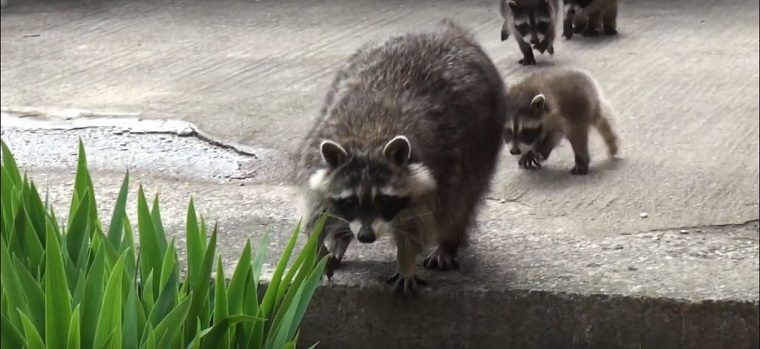Raccoons can sometimes be a huge problem to us, since raccoons are mostly known to be urban environment animals they seem to sneak into our houses, garbage’s, ponds and make a mess. Hence, they love the human food since most foods that we consume includes vegetables and fruits. In our perspective, garbage is known to be the left overs thrown away, but for Raccoons it is a paradise of heavenly goodies! In this article, we will be providing you baits and trapping methods to get rid of the Raccoon’s however remember that you should not hurt these animals during this process. Hurting of animals is not tolerated. Continue reading to learn the methods and tips.
 First you should know about how to Target the correct animal (Raccoon)
First you should know about how to Target the correct animal (Raccoon)
One of the main problem that all amateurs face is that they set a trap, and end up catching every animal around them except for a Raccoon which is the real problem here. Many house owners always seem to complain about how they were able to catch every other animal, but have always failed in trapping a Raccoon. Make sure that you set your trap along the path where the Raccoon usually walks by, so that when it is cross passing it would notice the food that you have left, and would begin to follow and end up in the trap. Do not set this trap in in-appropriate places which would cause other neighbours pets to get trapped instead. As I mentioned above, remember, any pet or animal should not be harmed during this process.
What type of bait to use?
Raccoons are omnivores and would eat almost anything. However, because anything is mentioned does not mean you should be using meat-based baits. Using meat based baits would only attract skunks, opossums and cats or dogs. So try using better baits that would attract the Raccoons, such as white bread, marshmallow’s, fruits etc. Set a trail of these foods directly to the trap.
Prevent these accidents from happening
Several accidents have happened due to setting the traps wrong, or setting the traps under direct sunlight. Some of these accidents have kill innocent animals too. So it is best that you make sure your trap is set safely, and would not harm these animals. If you trap the animal, then make sure you check in every often and make sure that the cage is kept away from sun light, because animals are sensitive, and may get heat strokes or dehydrated under the sun which could cause them to lose conscious or die. Remember that you are responsible if any harm is done to these animals.
Live Cage Trap
This is the most common type of trap used by both wildlife, and house owners. This is a cage, generally a large metal cage into which a raccoon is lured into by food. Close to the back of the cage you can find a trip pan. As the Raccoon steps onto the pan, this triggers the trap and shuts the door, which blocks its way from going out. The Animal is trapped inside alive and safe.
Some of these traps are made by using different kinds of materials, such as solid-walled plastic. Most of these cages are made from steel bar. Remember that any cage trap that you use need to be large enough to hold the raccoon inside. So mostly, look forward to buy a cage that is at least 32inches long and 12 inches high and wide. If it is too small, then the Raccoon won’t be able to go inside, and in fact the whole plan would be nothing but a failure.
How to protect yourself when handling a live trap?
Raccoons have longer hind legs than front ones, so make sure you wear gloves when you are moving the cage, since they can reach out to you and scrape or bite. This could cause infections, also wearing gloves is the best way to keep your scent from spreading to the Raccoon.
Contact the wildlife
Some methods, or all methods you try may not work out for you, this is because there is something that you are not doing right, or else your cage is just too wobbly and unstable for the Raccoon to be lured in. If you are unable to catch the Raccoon even after several attempts, then I suggest that it is best you contact the Wildlife team closest to you, so they can help you with capturing this animal without causing harm to any other animals around. Also at some point, the Raccoon that you are trying to capture may be affected by Rabies, which may probably affect you and your family or pets which would them turn out to be a much worse problem. If you are unable to handle, then let the experts do it for you.
Precautions - Any animal or creature must not be harmed during any of these methods or baits that you may tend to use. If any harm is still done for these animals then you are responsible for this.
Go back to the
How to Kill Raccoons page.